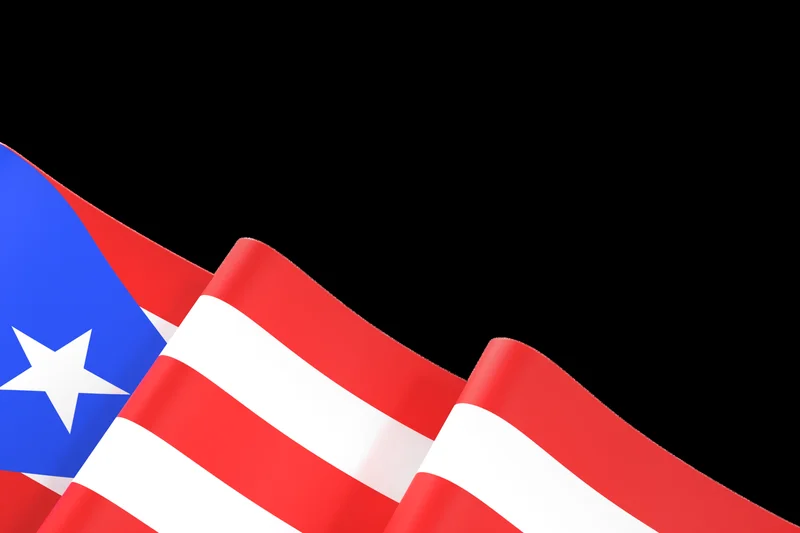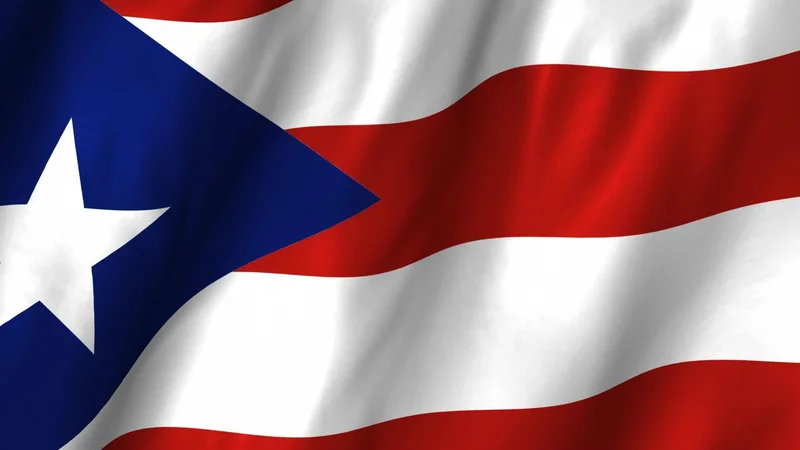Article Directory
So let me get this straight. In one corner, you have a conservative talking head getting publicly pantsed on her own show because she didn't know Puerto Ricans are American citizens. In another, you have the NBA sending the Heat and the Magic down for a little preseason exhibition game. And in the main event, you have ten F-35B stealth fighters, stripped of their markings, sitting on a tarmac in the Caribbean humidity, getting loaded with live 500-pound bombs.
This isn't a country; it's a focus group for America's split personality disorder.
One minute, we're debating whether a global superstar like Bad Bunny—a guy from, you know, Puerto Rico—is "American" enough for the Super Bowl. The next, we're using the island as an unsinkable aircraft carrier to stage a potential shadow war with Venezuela. It's a surreal spectacle of cultural ignorance and geopolitical hardball playing out on the same 100-mile-wide patch of land.
And we're all just supposed to pretend this is normal. That having a pop culture meltdown over the Puerto Rico flag in one breath while planning kinetic military strikes in the next is just... how things work. No, 'normal' isn't the word. This is the normalization of the absolutely insane.
The Bread and Circuses Tour
It’s almost poetic, isn’t it? The same week the Pentagon releases glamour shots of its most advanced fighters parked at the old Roosevelt Roads Naval Station, the NBA is getting ready to play a meaningless preseason game in San Juan, Puerto Rico. It’s the perfect metaphor for how the mainland views the island: a convenient venue. A place for a quick game, a cheap vacation at one of the all-inclusive puerto rico resorts, or a forward operating base for whatever’s on the White House agenda this month.
The Tomi Lahren thing is just the cherry on top of the ignorance sundae. Getting schooled on basic, fifth-grade civics—that people born in a U.S. territory are, in fact, U.S. citizens—is embarrassing enough. But it's the subtext that’s so telling. The casual dismissal, the assumption that Bad Bunny is a foreigner, reveals the core problem. To a huge chunk of America, Puerto Rico isn't really part of the country. It’s a possession. A vacation spot. An accessory.
It’s a place you can project your anxieties onto. Is Bad Bunny a threat to American values? Is he too political? Does he sing in English? These are the questions that occupy cable news, while a few miles away, U.S. Marines are bolting live AMRAAM missiles onto the wings of jets. Does anyone in Washington or Miami or Los Angeles see the cognitive dissonance here? Or is the island just a backdrop, a soundstage where America can act out all its dramas, from the trivial to the deadly serious?
The whole island is basically America's spare room. You know, the one where you dump the treadmill you swear you'll use, boxes of old tax returns, and a squadron of stealth fighters you need to keep handy for a "special project" in the neighbor's yard. The people who actually live in the room? They're just expected to step around the mess.
The Tip of the Spear
Let’s be brutally honest about what’s happening here. Those ten F-35s didn’t make the long haul from Arizona to sit under lightning rods because the Pentagon is suddenly worried about cocaine smuggling. The official line is that this is all part of a "counter-narcotics operation." Right. And I'm sure those 500-pound JDAMs are for precisely targeting a guy in a go-fast boat. Give me a break.

This is about Venezuela. It's about Nicolas Maduro and the Trump administration’s very public desire to see him gone. You don't deploy a squadron of the most advanced fifth-generation fighters on the planet, along with guided-missile destroyers, a nuclear submarine, and a shadowy special operations mothership called the Ocean Trader, to stop drug mules. This is a power play, a full-scale military buildup hiding in plain sight. They’re not just rattling a saber; they’re sharpening it on Puerto Rico’s doorstep.
And the Pentagon’s own PR game is a joke. They strip the unit markings off the jets for "operational security," then post official photos with captions explicitly identifying them as belonging to VMFA-225 (F-35s Deployed To Puerto Rico Showcased In First Official Images (Updated)). What's the point? Is it security theater? Or is it a message, a carefully calibrated leak to let Caracas know exactly who’s parked next door? How much of this is deterrence, and how much is genuine preparation for a conflict that would inevitably spill over and affect the 3.2 million U.S. citizens living right there?
While the mainland media obsesses over a celebrity spat, the Venezuelan Defense Minister is on Twitter, claiming his radar is tracking these same F-35s flying off his coast. This ain't a drill. This is the quiet part getting very, very loud, and the sound is being muffled by the dribbling of basketballs and the hot air of cable news debates.
The whole thing feels so fragile. So precarious. A single miscalculation, a single itchy trigger finger, and suddenly the weather in Puerto Rico isn't just about sunshine and hurricanes; it’s about surface-to-air missiles. Then again, maybe I'm the crazy one for even connecting these dots.
A Flicker of Resistance
Just when the cynicism threatens to swallow you whole, you get a story that feels like a flicker of light. A federal court actually sided with local community groups and ruled that FEMA—the same agency that botched the Hurricane Maria response so spectacularly—can't just spend billions rebuilding Puerto Rico's busted, fossil-fuel-dependent power grid (Legal Victory: FEMA Must Consider Rooftop Solar for Puerto Rico’s Ailing Grid). The court basicly told them they have to seriously consider distributed renewable energy, like rooftop solar.
It’s a huge win for the people who actually live there. For years, activists have been screaming that the disaster funds were a once-in-a-lifetime chance to build a resilient, modern grid, not just patch up the old, failed system that leaves everyone in the dark after every storm. They’re fighting for a future where they control their own power, literally.
But even this victory feels fragile. It’s one court ruling against the full weight of federal inertia and a presidential administration ideologically hostile to clean energy. It’s a win for self-determination on an island currently being used as a launchpad for someone else's foreign policy. How do you build a sustainable future when the ground beneath your feet is being treated as a temporary military base?
It’s the ultimate Puerto Rican paradox. Fighting for the right to put solar panels on your own roof while stealth bombers practice attack runs off your coast. One is a fight for the future, the other is a relic of 20th-century imperialism. Which one wins?
Just Another Piece on the Board
At the end of the day, that’s all this is. From Washington’s perspective, Puerto Rico isn’t a community of 3.2 million American citizens with their own hopes, dreams, and legal victories. It's a piece on a chessboard. It’s a strategic location for military assets, a market for entertainment, a political football for cable news, and a convenient, offshore scapegoat. The F-35s, the NBA game, the Bad Bunny debate, and the FEMA lawsuit aren't separate stories; they’re symptoms of the same fundamental disease: a colonial relationship dressed up in 21st-century clothes. The island gets the spectacle and the risk; the mainland gets the power and the plausible deniability. And the people of Puerto Rico are just left to live in the middle of it all, hoping the game pieces don’t crush them.




